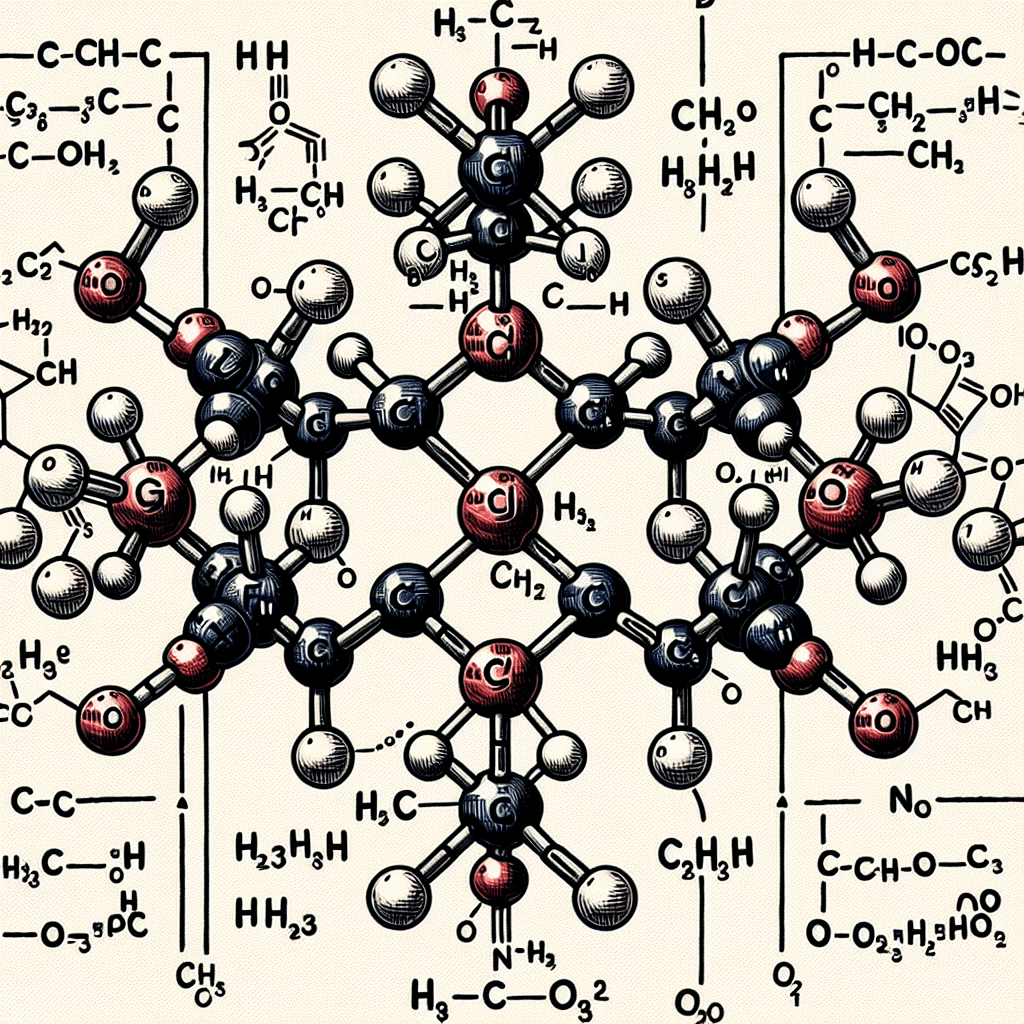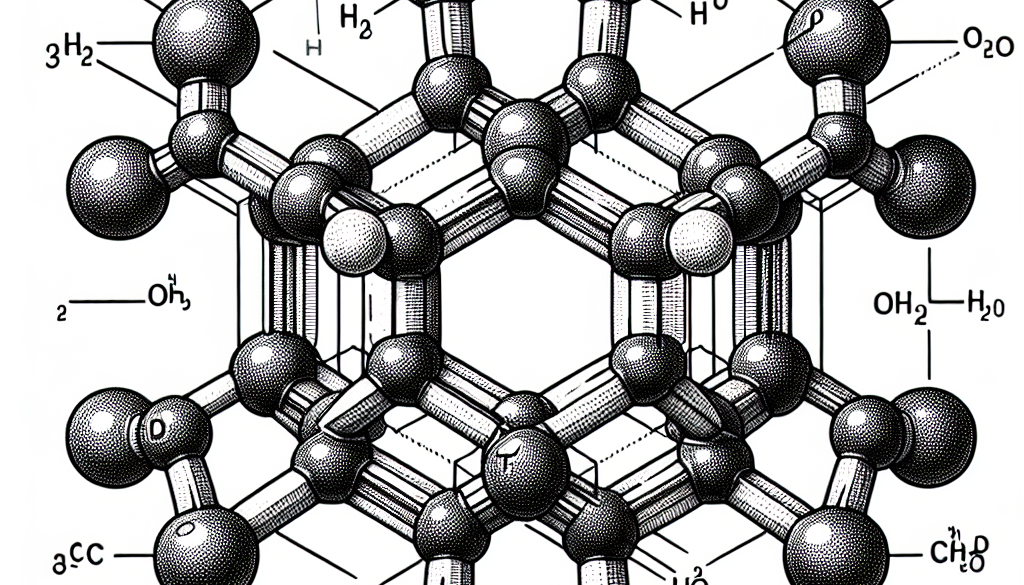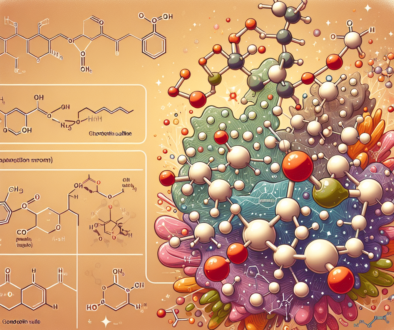Molecular Formula of Resorcinol: Explained
-
Table of Contents
- Molecular Formula of Resorcinol: A Comprehensive Guide
- Understanding the Basics: What is Resorcinol?
- The Molecular Structure of Resorcinol
- Physical and Chemical Properties of Resorcinol
- Applications of Resorcinol
- Case Studies and Research on Resorcinol
- Health and Safety Considerations
- Environmental Impact of Resorcinol
- Conclusion: The Significance of Resorcinol’s Molecular Formula
- Discover ETChem’s Protein Products
Molecular Formula of Resorcinol: A Comprehensive Guide

Resorcinol is a chemical compound that plays a significant role in various industrial applications, from pharmaceuticals to dyes. Understanding its molecular formula is crucial for chemists and researchers who work with this substance. This article delves into the molecular structure of resorcinol, its properties, and its uses, providing valuable insights into this versatile compound.
Understanding the Basics: What is Resorcinol?
Resorcinol, also known as m-dihydroxybenzene, is an organic compound that belongs to the phenol family. It is characterized by the presence of two hydroxyl groups attached to a benzene ring. The molecular formula of resorcinol is C6H6O2, indicating that it consists of six carbon atoms, six hydrogen atoms, and two oxygen atoms.
The Molecular Structure of Resorcinol
The molecular structure of resorcinol is relatively simple yet significant. It features a benzene ring, which is a stable ring of six carbon atoms, with alternating double bonds. Attached to this ring are two hydroxyl groups (–OH) at the meta positions, which means they are separated by one carbon atom. This arrangement is what gives resorcinol its unique chemical properties and reactivity.
Physical and Chemical Properties of Resorcinol
- Appearance: Resorcinol typically appears as white crystals or a crystalline powder.
- Solubility: It is highly soluble in water, alcohol, and ether, making it versatile for various applications.
- Melting and Boiling Points: Resorcinol has a melting point of around 110°C and a boiling point of 281°C.
- Reactivity: The hydroxyl groups in resorcinol make it a reactive compound, capable of undergoing various chemical reactions.
Applications of Resorcinol
Resorcinol’s unique properties make it valuable in several industries. Here are some of its most common uses:
- Pharmaceuticals: It is used in the synthesis of pharmaceuticals, including antiseptics, disinfectants, and various medications.
- Resins and Adhesives: Resorcinol-formaldehyde resins are known for their high strength and are used in wood bonding and tire manufacturing.
- Dyes and Pigments: Resorcinol is a precursor to numerous dyes and pigments used in the textile and cosmetic industries.
- UV Absorbers: It serves as a UV absorber in sunscreens and hair dyes, protecting against harmful ultraviolet radiation.
Case Studies and Research on Resorcinol
Research on resorcinol has led to several interesting case studies. For instance, its role in developing new adhesives has revolutionized the automotive and aerospace industries by providing lightweight and durable bonding solutions. Additionally, studies on resorcinol’s UV-absorbing capabilities have contributed to the advancement of more effective sunscreens and hair care products.
Health and Safety Considerations
While resorcinol is useful, it is not without health risks. It can be irritating to the skin and eyes, and prolonged exposure may lead to more severe health issues. Therefore, handling resorcinol requires appropriate safety measures, including the use of personal protective equipment and proper ventilation in work areas.
Environmental Impact of Resorcinol
The environmental impact of resorcinol is an area of ongoing research. It is biodegradable under certain conditions, but improper disposal can lead to contamination of water sources. Thus, industries using resorcinol must adhere to strict environmental regulations to minimize its ecological footprint.
Conclusion: The Significance of Resorcinol’s Molecular Formula
The molecular formula of resorcinol, C6H6O2, is the foundation of its diverse applications and properties. From its role in the pharmaceutical industry to its use in high-performance adhesives, resorcinol’s impact is widespread. Understanding its molecular structure is essential for those working with this compound, as it informs both its potential uses and the necessary precautions for its handling.
Discover ETChem’s Protein Products
If you’re interested in high-quality protein products, consider exploring ETChem’s offerings. Their range of collagens, including marine, fish, bovine, chicken, and various types, are perfect for various industries. With a focus on quality and customer satisfaction, ETChem is your go-to source for protein needs.
About ETChem:
ETChem, a reputable Chinese Collagen factory manufacturer and supplier, is renowned for producing, stocking, exporting, and delivering the highest quality collagens. They include marine collagen, fish collagen, bovine collagen, chicken collagen, type I collagen, type II collagen and type III collagen etc. Their offerings, characterized by a neutral taste, instant solubility attributes, cater to a diverse range of industries. They serve nutraceutical, pharmaceutical, cosmeceutical, veterinary, as well as food and beverage finished product distributors, traders, and manufacturers across Europe, USA, Canada, Australia, Thailand, Japan, Korea, Brazil, and Chile, among others.
ETChem specialization includes exporting and delivering tailor-made collagen powder and finished collagen nutritional supplements. Their extensive product range covers sectors like Food and Beverage, Sports Nutrition, Weight Management, Dietary Supplements, Health and Wellness Products, ensuring comprehensive solutions to meet all your protein needs.
As a trusted company by leading global food and beverage brands and Fortune 500 companies, ETChem reinforces China’s reputation in the global arena. For more information or to sample their products, please contact them and email karen(at)et-chem.com today.




